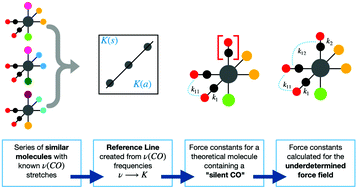The “silent CO”: a new technique for calculating transition metal carbonyl force fields†
Abstract
The notion of a “silent CO group” (effectively an infinitely heavy CO group) is introduced to enable energy-factored force fields to be estimated accurately for molecules where there are fewer ν(CO) frequencies than force constants in the force field (viz. underdetermined force fields). The symmetry classes of molecules covered are the Cs tricarbonyls (e.g. Fe(CO)3(diene) and fac-Re(CO)3(L-L)X), C2v tricarbonyls (e.g. mer-M(CO)3(L)3 M = Cr, Mo, W), C3v tetracarbonyls (e.g. Fe(CO)4(L)), C2v tetracarbonyls (e.g. cis-M(CO)4(L)2 and Fe(CO)4(L)) and C4v pentacarbonyls (e.g. M(CO)5(L) M = Cr, Mo, W and M(CO)5(X) M = Mn, Re). It is a relatively simple matter to extend the method to types of molecules not directly considered in this paper.



 Please wait while we load your content...
Please wait while we load your content...